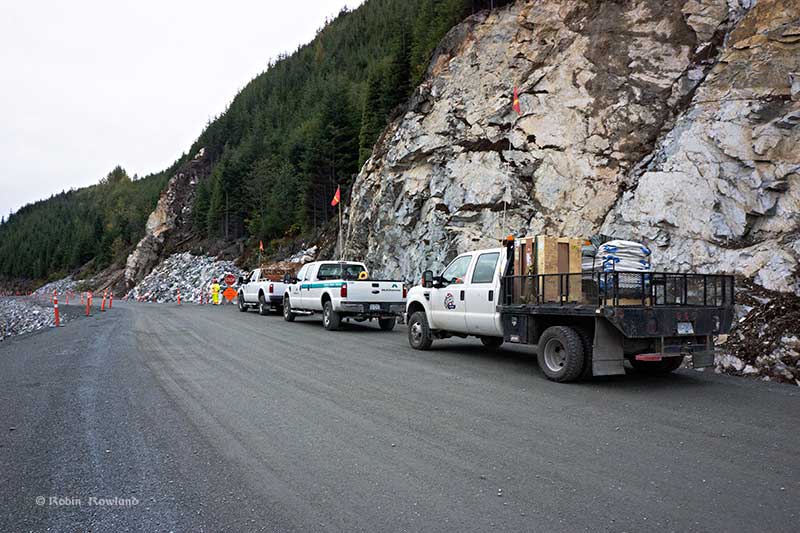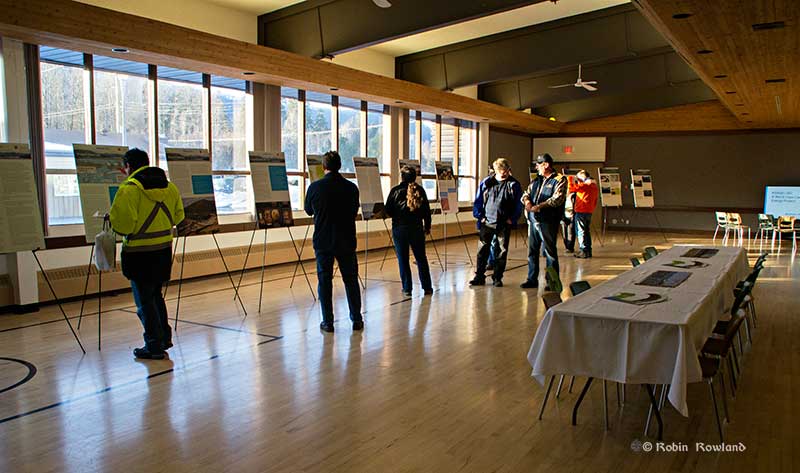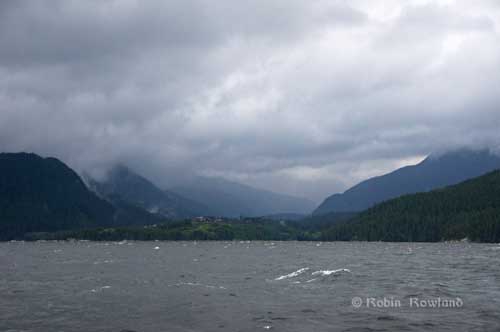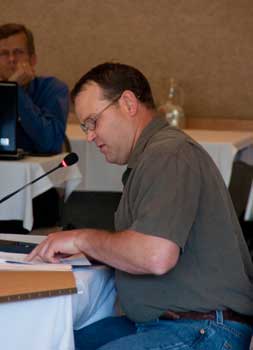The Bish Forest Service Road will reopen to the public on March 1, 2015. With the upgrades created by the Chevron-led Kitimat LNG project, the single lane logging rough logging is now a high quality gravel “resource road.”
The first 12 kilometres of the road will be open “to provide public access to connecting roads, recreational areas and natural hiking trails,” Chevron says.
“In terms of Kitimat specifically we’ve completed a number of key projects,” said David Molinski, Chevron’s lead for Regulatory and External Affairs. “We’ve made the upgrades to the Forest Service Road, and the Early Works we’ve been doing on site at the Bish Cove site.

“So we’ve been for the past couple of years putting a lot of effort on advancing that part of the project. We’ve completed the key elements of the Forest Service Road upgrades over the past four years,” Molinksi said, “When we got there it was essentially a single track logging road and it was very difficult to access the Bish Cove site. So we wanted to make sure we had a road that would help support the project. That means having an all weather access all year round. That’s a very substantial development.
“It’s a public road, it’s always has been a public road, in fact it’s owned by the Crown.
“It’s time now for us to reopen that road. We had it closed for safety reasons. We wanted to make sure we completed the work on the road. There was blasting, moving rock, breaking down rock, stabilizing slopes.
“We had to make sure we could that work done in a safe way. Now that’s done, we’ve completed the road upgrades and we’re very happy to reopen it to the public. We look at it as being a long term legacy for the community.

“The road is available for people in the community to use. There’s a number of recreation sites people in the community have used for many generations. So we’re pleased we can turn that road back into being publicly available and they can use it safely so they can get access to the areas they love around this community.”
In 2015, Chevron says, some work may continue on the road and “may include power line installation, paving and other construction activities.” There is also a need for the road to “stabilize” Molinksi said. “We’ll come back down the road and make a decision about what the right timing is to cap that road. Right now we don’t have a specific schedule It’s good for the road to stabilize and settle over the next couple of seasonal cycles.”
The decision about the future of the road will depend on the uncertain investment climate, due to the downturn in the energy industry.
In a panel at the open house on Feb. 24, Chevron said that projects like Kitimat LNG “are significant, very large and extremely complex with multiple moving parts that must all come together through hard work and perseverance in order to be successful.”

Chevron will continue to make a capital investment on the Kitimat side of the project but “the pace of field work in Kitimat at the LNG Plant will be decreasing as we focus capital spending on other aspects of the project.
For 2015, Chevron will concentrate on exploration in northeast British Columbia, Molinksi said, “That’s where the Liard Basin and the Horn River Basin are located and that’s where we’re developing the natural gas, substantial natural gas resources to support this project… This year we’re going to focus on getting additional data on the natural gas that we have a number of rigs that are running right now. We’re going to be drilling wells over 2015 and make sure we have a good understanding of those wells that are going to be supplying gas to this project. We have to know as much about that resource as this site here.”
“As a result there will be a decrease in site preparation work associated with the Kitimat LNG project and the Pacific Trails Pipeline during 2015,” the Chevron panel said.



